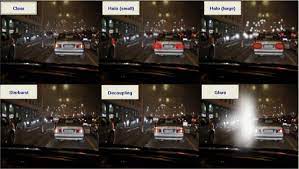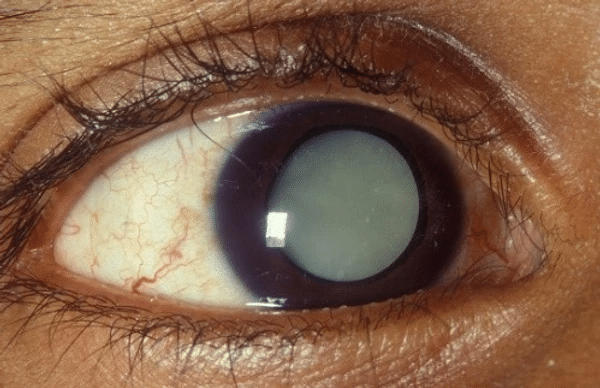Halos are a common postoperative complication of cataract surgery. They may occur in up to 20 percent of patients.
Halos after cataract surgery are caused by light reflecting off the edges of the incision wound during healing. They typically last for about two weeks, but may last longer if you are predisposed to dry eye syndrome or have had previous corneal surgery.
The good news is that halos after cataract surgery usually go away on their own and do not need treatment. However, if they persist beyond two weeks or interfere with your vision, consider consulting with your eye doctor or surgeon.
The halo effect is a common occurrence after cataract surgery. It is caused by the increased light reflection from the outer edges of the artificial lens implant. This can happen in one or both eyes.
Halos are most commonly seen when you look at bright lights, such as headlights, street lights and even direct sunlight on a bright day. Halos can also be seen when you look at certain colors including white, blue and yellow.
The good news is that halos will go away with time as your eye heals and adjusts to the new intraocular lens (IOL). The amount of time it takes for halos to resolve varies from person to person but usually takes about three months after surgery. In some cases, people develop halos on one side initially but then develop them on both sides later on in their recovery process because their vision has changed slightly over time due to healing or other factors such as aging eyesight or presbyopia (age related farsightedness).
If you have developed halos after cataract surgery and they are bothering you then ask your doctor about treatment options available to help reduce them such as special glasses called anti-reflective lenses or anti-reflective coating on your contact
How do you get rid of halos after cataract surgery?
Halos are caused by light reflecting off the edges of the cornea, which is the clear front part of the eye. Halos can occur after cataract surgery, but they’re not permanent.
After surgery, your doctor will prescribe topical steroid drops to reduce swelling. You’ll also be instructed to wear protective sunglasses for a few weeks.
You may need to wear glasses or contact lenses after cataract surgery if you have vision problems that don’t improve with surgery alone or if you have astigmatism (one-sided refractive error).
Cataracts occur when protein builds up in the lens and blocks light from reaching your retina — an area at the back of your eye responsible for sending images to your brain. This causes blurred vision and glare, which is why cataracts are sometimes called “age-related blindness.”
Cataract surgery involves replacing the cloudy lens with an artificial one that’s implanted into your eye during a procedure known as phacoemulsification or phacofragmentation.
After cataract surgery, you might see halos around lights. Halos are caused by light scattering in your clear lens capsule. The more dense the capsule is, the more likely you are to see halos after cataract surgery.
The amount of time that it takes for a person to get rid of halos after cataract surgery depends on their age. Younger people tend to have a less dense capsule and therefore see halos for a shorter amount of time. Older people tend to have a more dense capsule and therefore see halos for longer periods of time.
If you are seeing halos after cataract surgery, ask your doctor about ways to decrease or eliminate these symptoms.
It is possible to get rid of halos after cataract surgery. The halos can be caused by the surgeon’s use of a lens implant that is too powerful. You should discuss this with your doctor and consider having the lens changed.
It is also possible that you have another condition on top of your cataracts, such as glaucoma or macular degeneration. These conditions could cause vision changes that are separate from your cataracts. In this case, your doctor may recommend additional treatment for these conditions.
If you are seeing halos around lights, they may be caused by glare from bright light sources like street lamps or headlights from cars driving by at night. Halos can also occur when you look at something bright through a dark windowpane or door frame during daylight hours when there is still some sunlight coming through the window or door frame.
The halos are caused by light scattering through the eye. This is a common phenomenon, and it can happen to anyone, even those who have perfect vision. The most common cause of halos is when you look at a bright light, such as a street lamp or car headlight, through foggy or dirty windshields.
The halos that you see around street lights after cataract surgery are caused by the surgically altered lens inside your eye. The surgeon has removed your natural lens and replaced it with an artificial intraocular lens (IOL). The IOL sits behind the iris and helps focus images onto your retina. When you look at a bright light source, light reflects off the edges of your iris (the colored part of your eye) and creates halos around the source of light.
Halos can also be caused by glare from sunlight reflecting off of water, snow, sand or any other type of reflective surface.
Do halos after cataract surgery go away?

Halos are a common side effect of cataract surgery. Halos are caused by light entering the eye after passing through an imperfect lens. It is most noticeable in bright conditions or when looking at lights.
After cataract surgery, halos may fade with time and become less noticeable. Halos are not permanent, but they may persist for several months after surgery.
The halos you see after cataract surgery are the result of light reflecting off the edge of your cornea. Halos can be a permanent side effect of cataract surgery, but they usually get better over time
Chances are that you’ll have some degree of halos after cataract surgery. Halos are caused by light reflecting off the edge of your cornea (the clear front part of your eye). They may be more noticeable at night or in dim light because there’s less light to dilute their brilliance and make them less noticeable
Halos can be a permanent side effect of cataract surgery, but they usually get better over time as your vision improves with glasses or contact lenses
Most people have halos around lights after cataract surgery. This is a normal part of the healing process and usually goes away in a few weeks.
Some people have halos that last longer than others.
If your halo doesn’t go away, it’s not necessarily a problem. It just means that your eye isn’t healing as well as it should be.
Your doctor may suggest some changes to your treatment plan, such as changing the type of lens you wear after surgery or increasing the amount of time you spend doing exercises for your eyes.
The halos you describe after cataract surgery are a result of the cornea being exposed to light.
The cornea is the clear front surface of your eye. The retina is behind it. The pupil is in the middle of the eye and can dilate or contract depending on how much light there is.
When you have cataract surgery, the doctor removes the cloudy lens from your eye and replaces it with an artificial one. This allows more light to come through so that you don’t need glasses or contacts anymore.
However, when you first get your new lens, there’s still some cloudy tissue around your pupil that blocks some of that light. This causes halos around lights at night when they’re shining directly into your eyes because it makes them appear larger than they really are, making them look like they’re coming from somewhere else other than where they really are — which can be startling and even dangerous if you’re driving at night!
What causes halos around lights after cataract surgery?
Halos around lights after cataract surgery are a common visual complaint after cataract surgery. Halos are caused by light scattering in the eye, and they can appear around any bright light source, including headlights and streetlights. Halos around headlights may be more noticeable at night because there is less contrast between the halo and its surrounding area.
Halos are not a normal part of vision, but they are a normal phenomenon of the eye. They occur when light enters the eye and then has to travel through a large amount of tissue before it reaches the retina. The light travels through different tissues at different speeds, so some of it will arrive at your retina sooner than other parts of it. The longer the distance from your cornea to your retina, the greater chance you’ll have halos around lights after cataract surgery.
Halos can also be caused by imperfections in your cornea or lens. If there’s scar tissue on your cornea or lens that causes scatter instead of absorption, you’re more likely to see halos around lights after cataract surgery as well as other vision problems like glare or double vision.
Halos around lights after cataract surgery are a common occurrence after you have cataract surgery. Halos are caused by light passing through the edges of the clear lens, which is different than the cloudy lens that was removed.
A halo is a ring of light seen around an object or light source such as a street light or headlight. Halos can be very bothersome and distracting to you and others. They can also affect your vision during night driving.
There are several reasons why halos happen after cataract surgery:
You have a smaller pupil size than before surgery, so less light enters your eye from each side of the lens. The edges of your new implant lens may be thicker than what was previously there, which creates more glare at night when looking at headlights on vehicles coming toward you. Your pupil size may increase in time after surgery, but it may never be as large as it was before surgery because of age-related changes caused by cataract development over time in your eyesight.
Halo effect is a common side effect of cataract surgery. It is caused by the clouding of the natural lens and can make it difficult to see at night or in low light conditions. The halos you see around lights are caused by glare from the light reflecting off of your cloudy natural lens.
There are several treatments for halo effect after cataract surgery. The most common treatment is called monovision, which allows you to focus on near objects with one eye and faraway objects with the other eye. Another way to treat halo effect is with multifocal contact lenses, which allow you to focus on both near and far objects at the same time.
A very rare condition called postoperative microcystoid degeneration can cause halos from glare from your own cornea after cataract surgery, even if there was no previous lens opacity present before surgery.
Halos around lights after cataract surgery are a common occurrence. The halo is caused by the glare from light sources, such as street lights and headlights, reflecting in the central part of your cornea. Halos are more noticeable at night.
Halos are most commonly seen for several months after cataract surgery, but can continue for years. The amount of time it takes for halos to go away depends on many factors including how much corneal haze you have and your overall health.
There are several ways to reduce or eliminate halos:
Wear sunglasses with UV protection when you’re outside during daylight hours. Use UV blocking sunglasses that also block glare.
Use tinted contact lenses to reduce glare when outdoors during daylight hours.
Do multifocal halos go away?

Multifocal halos, which are a type of glare, are caused by the lens being unable to focus on the object you’re looking at. They’re most common in multifocal lenses and occur as a result of light being scattered as it passes through the lens and onto your retina.
Multifocal halos are not permanent, but they can persist for up to three months after you’ve had LASIK or PRK, or for about one week after you’ve had laser assisted in situ keratomileusis (LASIK).
After that time has passed, you should be able to see clearly without any halo effect. In some cases, however, they may never go away completely
Multifocal halos are caused by light scatter from the edges of your eyeglass lenses. It’s very common for multifocal contact lenses to have a halo effect.
Multifocal halos usually disappear after a few weeks or months of wearing your glasses. The halo is more noticeable when your eyes are tired and less noticeable when you’re not looking through the center of the lens.
Some people find their multifocal halos bothersome enough that they choose not to wear their glasses. If you’ve been wearing eyeglasses for a long time and have had success with them, it may be hard to give up on them. But if you’re finding it difficult adjusting to multifocals, consider switching back to single-vision lenses (non-multifocal).
Multifocal halos are a common side effect of multifocal contact lenses, and they may take some time to disappear. The halos are caused by light reflecting off the edges of the contact lens, which can be irritating and distracting.
The halos will eventually go away on their own as your eyes adjust to the lenses. They may take several weeks or months, but most people notice that their vision is clearer after about six months of wearing multifocal contacts.
It’s important to remember that if you’re experiencing halos with your contacts, it’s not necessarily because something is wrong with your vision. Halos are caused by light reflecting off the edges of the contact lens and entering into your eye at an angle. This is why they don’t occur with single-focus lenses: there’s no place for light to reflect off and enter at an angle.
Multifocal halos are most often caused by the astigmatism that is inherent in multifocal lenses. The astigmatism causes the light to focus more on one side of the lens than on another, which causes it to create a halo around lights. The best way to deal with this problem is to have your optician adjust the prescription so that it fits your eyes more precisely.
If they cannot do that, then you should consider wearing glasses when you go out in the evening or at night. There are also some prescription drops available that may help as well.
How long do halos last after eye surgery?
Most halos are temporary. They disappear within a few weeks. If you see a persistent halo, or if your vision becomes blurry, contact your ophthalmologist right away.
If you have halos after cataract surgery, it may be necessary to recalibrate your vision. The most common cause of halos is an improperly positioned intraocular lens (IOL). The IOL is the lens that replaces your natural lens in cataract surgery and helps focus light on the retina. If it’s not positioned properly, it can cause blurred vision and halos.
If you have halos after LASIK or PRK surgery, this could be caused by a corneal flap that hasn’t healed properly. Your doctor will examine your eyes and determine if any treatment is necessary.
Do eye halos go away?

Yes, eye halos go away.
The blue-white rings around light sources are called “eye halos,” and they’re a common side effect of taking certain medications. The most common cause of eye halos is a reaction to certain drugs that contain phenylephrine, which constricts blood vessels in the body. These include the decongestant pseudoephedrine (Sudafed), decongestant phenylephrine (Neo-Synephrine), and antihistamines such as Claritin, Allegra and Zyrtec.
If you’ve been taking one of these medications for several days and your eyes still have a glow around lights, talk to your doctor about other options, says Dr. Lawrence Parks, an ophthalmologist at the Mayo Clinic in Rochester, Minn.
Still, it’s not clear why some people develop eye halos while others don’t; it may have something to do with how much blood flows through their retinas — the delicate tissue at the back of your eyes that senses light — says Dr. Parks.
